Di Shi
Rethink AI-based Power Grid Control: Diving Into Algorithm Design
Dec 23, 2020



Abstract:Recently, deep reinforcement learning (DRL)-based approach has shown promisein solving complex decision and control problems in power engineering domain.In this paper, we present an in-depth analysis of DRL-based voltage control fromaspects of algorithm selection, state space representation, and reward engineering.To resolve observed issues, we propose a novel imitation learning-based approachto directly map power grid operating points to effective actions without any interimreinforcement learning process. The performance results demonstrate that theproposed approach has strong generalization ability with much less training time.The agent trained by imitation learning is effective and robust to solve voltagecontrol problem and outperforms the former RL agents.
Two-stage WECC Composite Load Modeling: A Double Deep Q-Learning Networks Approach
Nov 08, 2019



Abstract:With the increasing complexity of modern power systems, conventional dynamic load modeling with ZIP and induction motors (ZIP + IM) is no longer adequate to address the current load characteristic transitions. In recent years, the WECC composite load model (WECC CLM) has shown to effectively capture the dynamic load responses over traditional load models in various stability studies and contingency analyses. However, a detailed WECC CLM model typically has a high degree of complexity, with over one hundred parameters, and no systematic approach to identifying and calibrating these parameters. Enabled by the wide deployment of PMUs and advanced deep learning algorithms, proposed here is a double deep Q-learning network (DDQN)-based, two-stage load modeling framework for the WECC CLM. This two-stage method decomposes the complicated WECC CLM for more efficient identification and does not require explicit model details. In the first stage, the DDQN agent determines an accurate load composition. In the second stage, the parameters of the WECC CLM are selected from a group of Monte-Carlo simulations. The set of selected load parameters is expected to best approximate the true transient responses. The proposed framework is verified using an IEEE 39-bus test system on commercial simulation platforms.
Autonomous Voltage Control for Grid Operation Using Deep Reinforcement Learning
Apr 24, 2019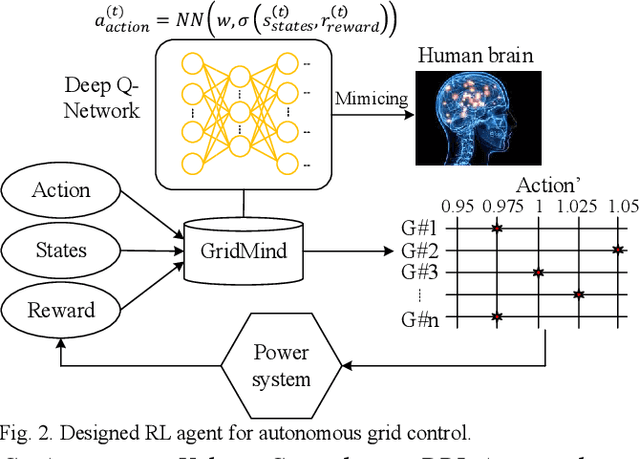
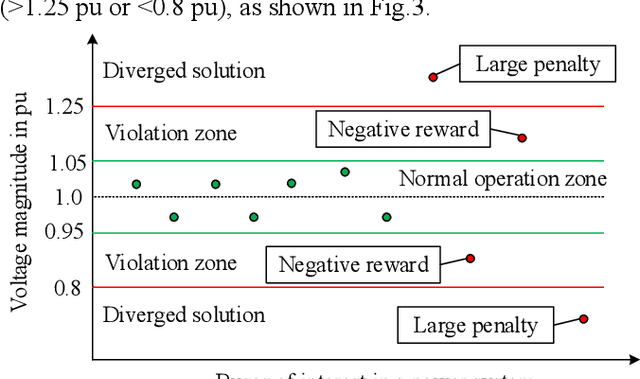
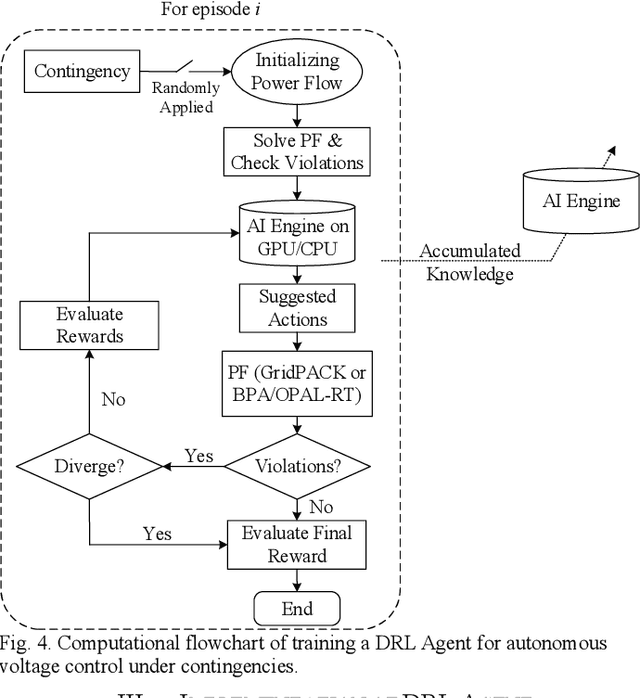
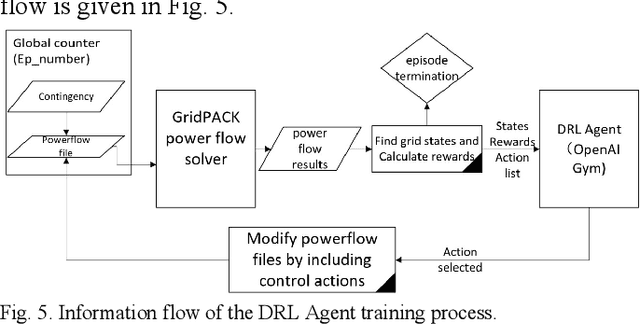
Abstract:Modern power grids are experiencing grand challenges caused by the stochastic and dynamic nature of growing renewable energy and demand response. Traditional theoretical assumptions and operational rules may be violated, which are difficult to be adapted by existing control systems due to the lack of computational power and accurate grid models for use in real time, leading to growing concerns in the secure and economic operation of the power grid. Existing operational control actions are typically determined offline, which are less optimized. This paper presents a novel paradigm, Grid Mind, for autonomous grid operational controls using deep reinforcement learning. The proposed AI agent for voltage control can learn its control policy through interactions with massive offline simulations, and adapts its behavior to new changes including not only load/generation variations but also topological changes. A properly trained agent is tested on the IEEE 14-bus system with tens of thousands of scenarios, and promising performance is demonstrated in applying autonomous voltage controls for secure grid operation.
Probabilistic Load Forecasting via Point Forecast Feature Integration
Mar 26, 2019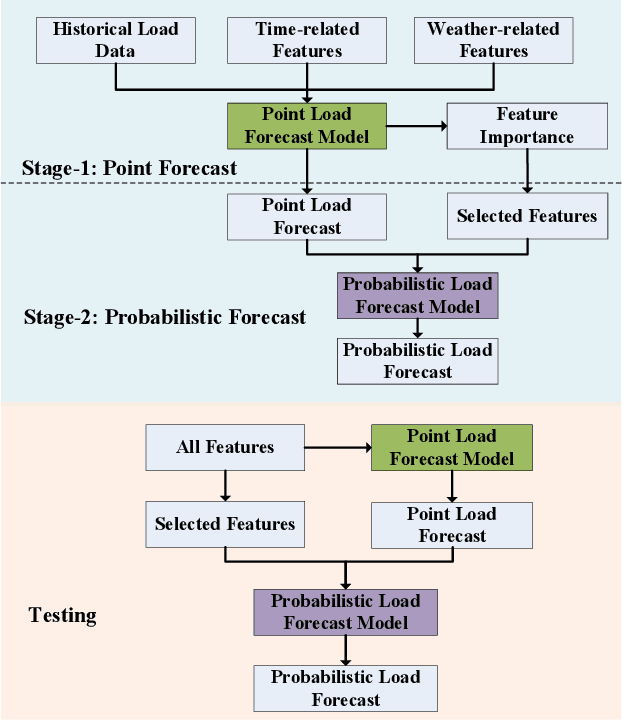
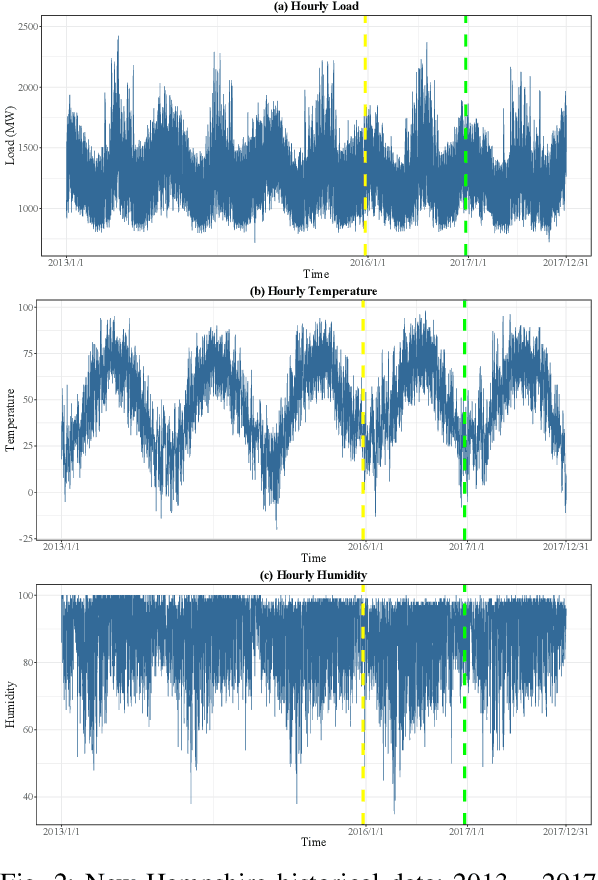
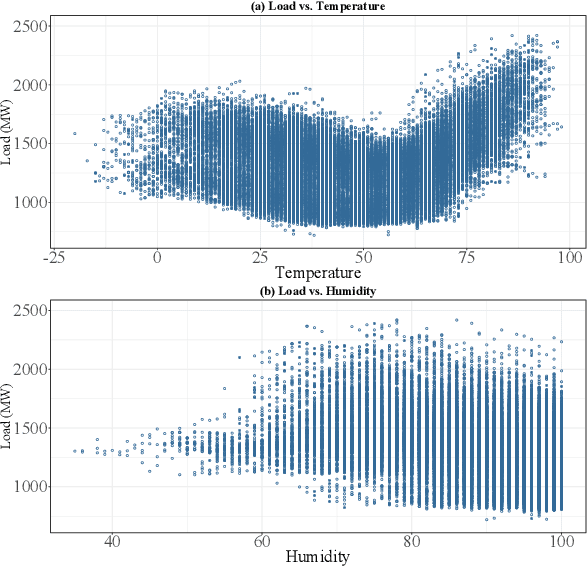
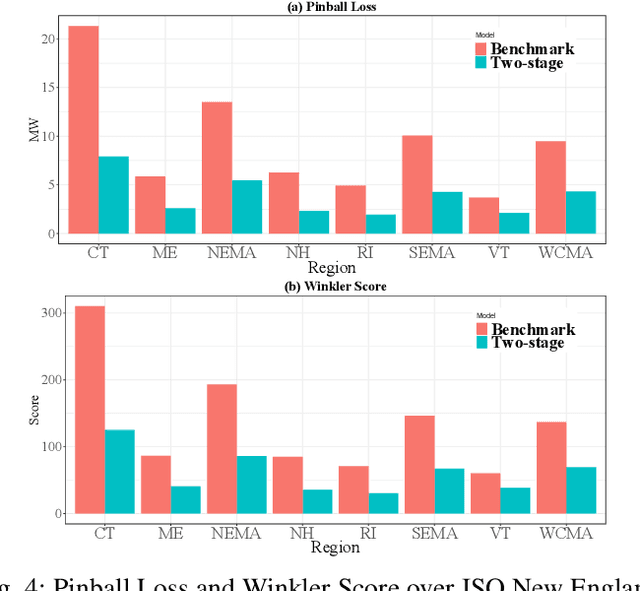
Abstract:Short-term load forecasting is a critical element of power systems energy management systems. In recent years, probabilistic load forecasting (PLF) has gained increased attention for its ability to provide uncertainty information that helps to improve the reliability and economics of system operation performances. This paper proposes a two-stage probabilistic load forecasting framework by integrating point forecast as a key probabilistic forecasting feature into PLF. In the first stage, all related features are utilized to train a point forecast model and also obtain the feature importance. In the second stage the forecasting model is trained, taking into consideration point forecast features, as well as selected feature subsets. During the testing period of the forecast model, the final probabilistic load forecast results are leveraged to obtain both point forecasting and probabilistic forecasting. Numerical results obtained from ISO New England demand data demonstrate the effectiveness of the proposed approach in the hour-ahead load forecasting, which uses the gradient boosting regression for the point forecasting and quantile regression neural networks for the probabilistic forecasting.
Short-term Load Forecasting at Different Aggregation Levels with Predictability Analysis
Mar 26, 2019



Abstract:Short-term load forecasting (STLF) is essential for the reliable and economic operation of power systems. Though many STLF methods were proposed over the past decades, most of them focused on loads at high aggregation levels only. Thus, low-aggregation load forecast still requires further research and development. Compared with the substation or city level loads, individual loads are typically more volatile and much more challenging to forecast. To further address this issue, this paper first discusses the characteristics of small-and-medium enterprise (SME) and residential loads at different aggregation levels and quantifies their predictability with approximate entropy. Various STLF techniques, from the conventional linear regression to state-of-the-art deep learning, are implemented for a detailed comparative analysis to verify the forecasting performances as well as the predictability using an Irish smart meter dataset. In addition, the paper also investigates how using data processing improves individual-level residential load forecasting with low predictability. Effectiveness of the discussed method is validated with numerical results.
Submodular Load Clustering with Robust Principal Component Analysis
Feb 20, 2019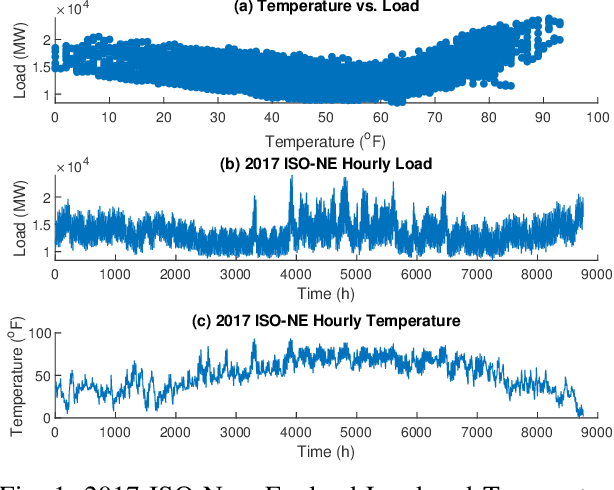
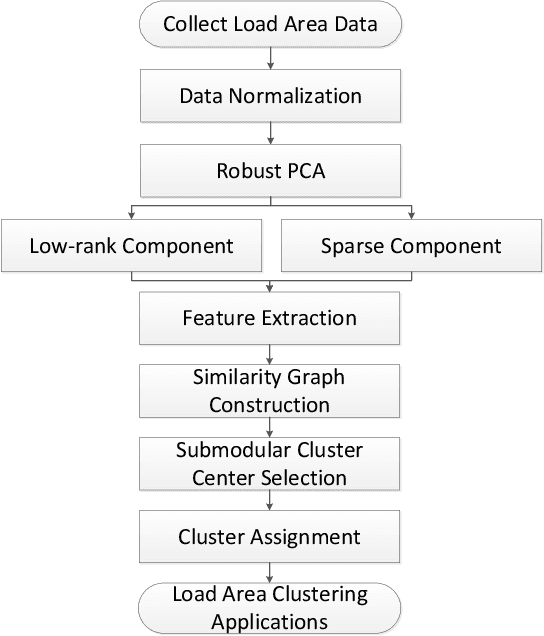
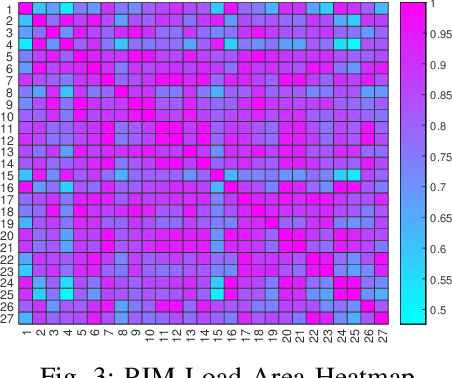
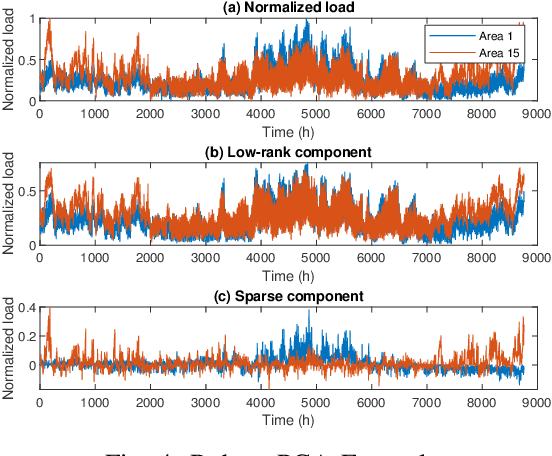
Abstract:Traditional load analysis is facing challenges with the new electricity usage patterns due to demand response as well as increasing deployment of distributed generations, including photovoltaics (PV), electric vehicles (EV), and energy storage systems (ESS). At the transmission system, despite of irregular load behaviors at different areas, highly aggregated load shapes still share similar characteristics. Load clustering is to discover such intrinsic patterns and provide useful information to other load applications, such as load forecasting and load modeling. This paper proposes an efficient submodular load clustering method for transmission-level load areas. Robust principal component analysis (R-PCA) firstly decomposes the annual load profiles into low-rank components and sparse components to extract key features. A novel submodular cluster center selection technique is then applied to determine the optimal cluster centers through constructed similarity graph. Following the selection results, load areas are efficiently assigned to different clusters for further load analysis and applications. Numerical results obtained from PJM load demonstrate the effectiveness of the proposed approach.
A Rprop-Neural-Network-Based PV Maximum Power Point Tracking Algorithm with Short-Circuit Current Limitation
Dec 06, 2018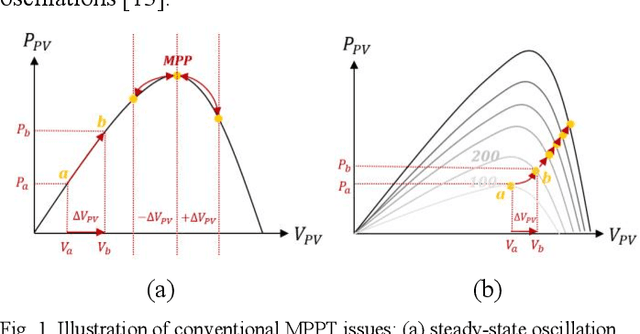
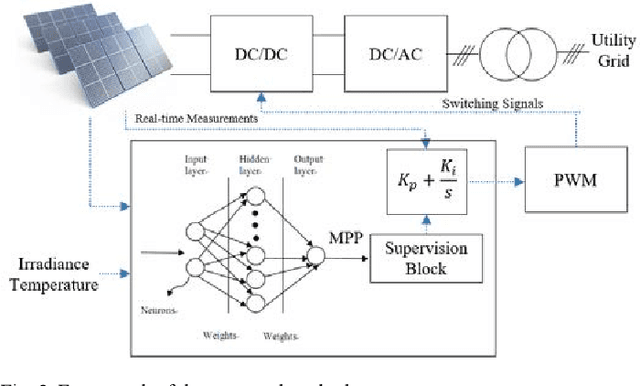
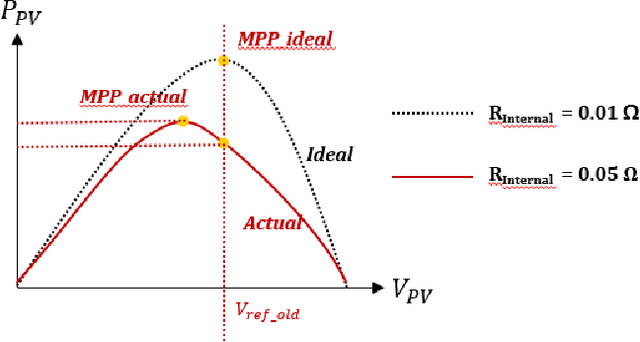
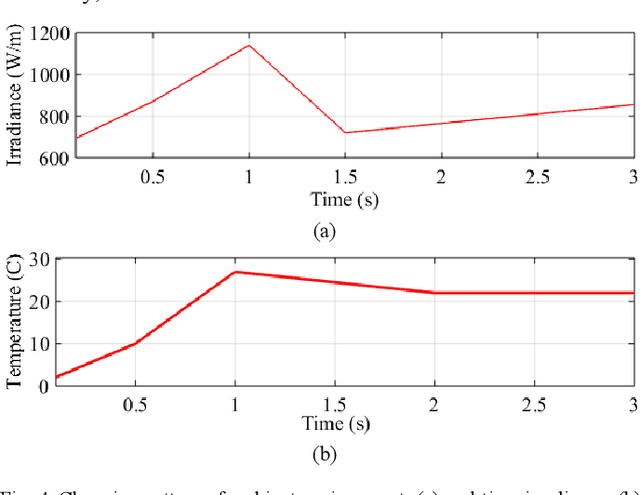
Abstract:This paper proposes a resilient-backpropagation-neural-network-(Rprop-NN) based algorithm for Photovoltaic (PV) maximum power point tracking (MPPT). A supervision mechanism is proposed to calibrate the Rprop-NN-MPPT reference and limit short-circuit current caused by incorrect prediction. Conventional MPPT algorithms (e.g., perturb and observe (P&O), hill climbing, and incremental conductance (Inc-Cond) etc.) are trial-and-error-based, which may result in steady-state oscillations and loss of tracking direction under fast-changing ambient environment. In addition, partial shading is also a challenge due to the difficulty of finding the global maximum power point on a multi-peak characteristic curve. As an attempt to address the aforementioned issues, a novel Rprop-NN MPPT algorithm is developed and elaborated in this work. Multiple case studies are carried out to verify the effectiveness of the proposed algorithm.
A Neuron-Network-Based Optimal Control of Ultra-Capacitors with System Uncertainties
Nov 29, 2018
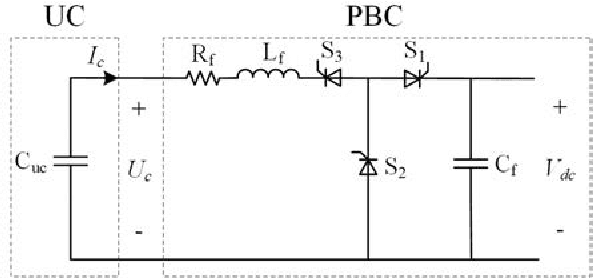
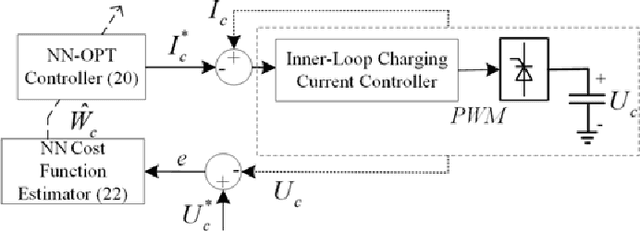
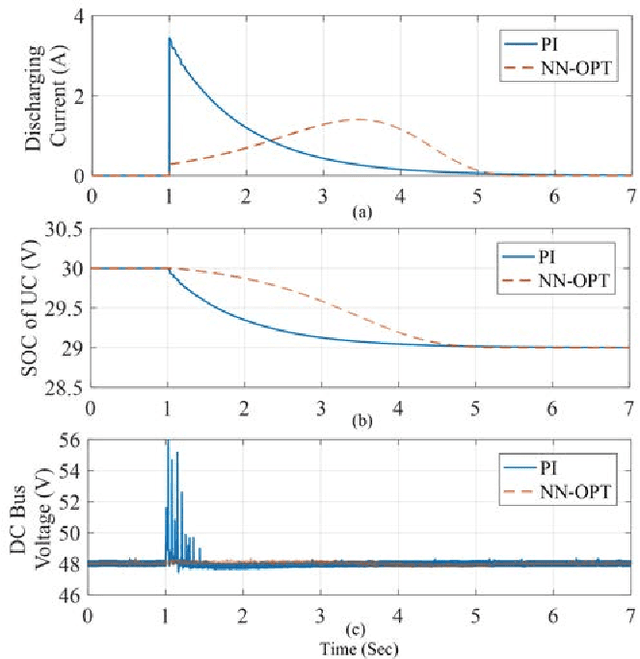
Abstract:In this paper, a neural-network (NN)-based online optimal control method (NN-OPT) is proposed for ultra-capacitors (UCs) energy storage system (ESS) in hybrid AC/DC microgrids involving multiple distributed generations (e.g., Photovoltaic (PV) system, battery storage, diesel generator). Conventional control strategies usually produce large disturbances to buses during charging and discharging (C&D) processes of UCs, which significantly degrades the power quality and system performance, especially under fast C&D modes. Therefore, the optimal control theory is adopted to optimize the C&D profile as well as to suppress the disturbances caused by UCs implementation. Specifically, an NN-based intelligent algorithm is developed to learn the optimal control policy for bidirectional-converter-interfaced UCs. The inaccuracies of system modeling are also considered in the control design. Since the designed NN-OPT method is decentralized that only requires the local measurements, plug & play of UCs can be easily realized with minimal communication efforts. In addition, the PV system is under the maximum power point tracking (MPPT) control to extract the maximum benefit. Both islanded and grid-tied modes are considered during the controller design. Extensive case studies have been conducted to evaluate the effectiveness of the proposed method.
 Add to Chrome
Add to Chrome Add to Firefox
Add to Firefox Add to Edge
Add to Edge